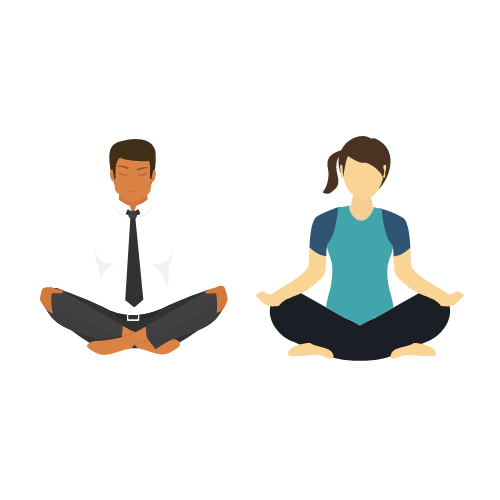Finding happiness through silence
Sitting in a sunny garden I asked her, “What is happiness for you?” In a beat, eyes closing as if to recall an image, she answered “Azure.” Then added, “I swam in a warm, flat sea, without a care. ‘Azure’ is the word for the sky and sea at that moment.”
It sounds idyllic doesn’t it? Yet as a route to happiness it has many problems. To experience that warm, flat azure sea people need to take time out of commitments, have disposable income, and decide that the environmental impact of flying is worth that transient experience of calm relaxation. It’s also a gamble that returning to that spot will evoke the same sensation. And it’s not very useful when a boss is behaving unkindly or a relationship is falling apart because in those moments saying “I’m just nipping back the Mediterranean” isn’t effective.
There are other consequences lurking here too. Spending money to reach happiness binds us to a life of commercial competition for salary in the shadow of those two ubiquitous totems: speed and efficiency. In turn, this lifestyle seems to alienate people from themselves, their communities and the natural world. The modern medicine for happiness often causes further suffering.
So are there alternatives to a consumerist approach to happiness, contentment and well-being?
For me, one alternative is a lot closer than taking an exotic holiday. What’s more, it can be accessed regularly and in different ‘dosages’ depending on the amount of time and effort we can offer to ourselves and our community.
A couple of years ago, I joined Shambhala London’s Calm Abiding practice sessions. There’s no sea, no sand and not a cocktail in sight. Yet there are other things that I believe are important and which help me connect with something that money cannot buy – one’s inherent goodness.
These day-long sessions take place on various Sundays dotted around the Centre’s busy schedule. They begin with a short period of chanting, (to set out our aspiration, our appreciation for our teachers and the lineage, and our ability to practice), then settle in to hours and hours of silent sitting. Simple.
A cook offers lunch and the Meditation Hall is re-organised to become Clapham Common’s only silent restaurant. Everyone eats together, and then tidies up, mindfully and without exchanging a word.
It is an interesting experience to work together to rearrange the room, appreciate a meal, and return the cushions for sitting meditation governed by pings on the timekeeper’s gong. The first time I did it my mind conjured the image of Pavlov and his dog scornfully laughing at my obedience. But then thoughts will do that and I found as I settled into the mealtime form I began to appreciate the group’s precision, synchronisation and harmony.
After lunch, excitement over, the day returns to practice for the afternoon with no talk or interviews to ‘break up’ the sitting. Bodies will creak and minds will play, distract, and go through periods of dull sleepiness. For me, there might also be small moments where I relax and then it becomes an affordable, local, and environmentally friendly method of discovering peace and happiness. No passports and delayed flights, but a break which gives me space to re-group.
A day of Calm Abiding offers everyone, who’s attended Shambhala Training Level One, an extensive period of sitting in a supportive environment. There aren’t many places that facilitate such a courageous undertaking.
So when it comes to happiness, I’ll try and find mine inside. Inside of me, within this sangha. There’s no ‘azure’ but I’d rather not tie happiness to the weather in remote places.
The next Calm Abiding Day is scheduled for 18 October from 10:00 until 18:00. Attendance by pre-registration before 15 October.




